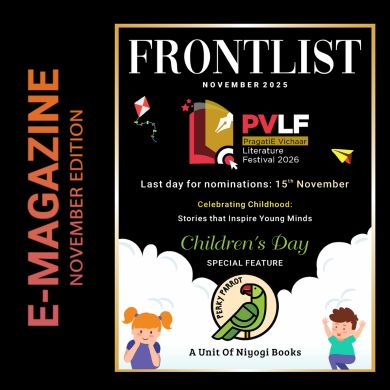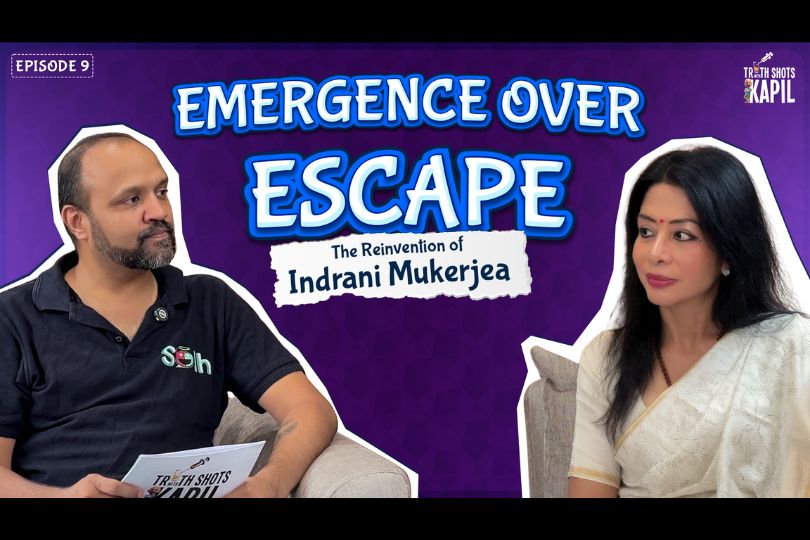Interview Of Amit Majmudar, author of 'Heroes the Colour of Dust'
on Feb 03, 2022
.jpg)
1- You are a diagnostic nuclear radiologist and on the other hand you're an author as well. How do you help your mind switch roles?
A: I don't feel very much tension between the two roles. With Radiology, it's a time-limited, focused activity, very much a job. I do the job while remaining myself, my essential self, which is a writer. In any case, Radiology itself consists in the preparation of reports on studies such as CT scans and x-rays--and as such, it is one more form of writing!
2- Where did you find the inspiration for writing such a topic for the children?
A: Literally, in my childhood home in a suburb of Cleveland, Ohio. My parents were moving out and putting the house up for sale, so it was one of my last visits there. I got this idea for a children's book at night while thinking about growing up in that house, and I sat down at the dining table after midnight and just started writing the first chapter. Scarcely ten minutes had passed between the idea and the execution. The other inspiration is my own wife, A. B. Majmudar, the author of a fantasy adventure for children called The Torchbearers, which was released by Puffin India in 2020 and is going to be released in the United States shortly. I had never written for children before, but her example inspired me to think in that direction creatively, since I saw how enthusiastic children can be as readers.
3- How did you come up with the concept that related birds with Mahatma Gandhi's Dandi March?
A: As it happens, I have an intricately researched historical novel about Gandhi and Jinnah (the founder of Pakistan) forthcoming in July 2022 with HarperCollins India. So Gandhi was very much in my mind. As for the sparrows, I am a big fan of Panchatantra-like or Aesopic fables, and stories starring anthropomorphized animals, whether it's a Pixar or Disney movie or a novel like Animal Farm. Talking birds just felt right!
4- What is your favorite chapter from the book that is very close to your heart?
A: I think it's the first chapter of the novel. I retain this distinct memory of writing it in my childhood home, which has since been sold, and which I will never set foot in again. It makes me feel that this novel, my first for younger readers, is a goodbye gift from that house to me. The emotion I had as I began writing, this wonderment, this excitement--"Who are these sparrows? What kind of name is 'Thunderfluff' and why does it sound so right? Where is this story coming from? What is going to happen?"--it felt like I was transcribing something passively, or receiving a gift. A gift from the house, or from my own childhood.
5- How does your book resonate with the children?
A: Well, so far, from the feedback I've gotten, children enjoy the humor and the derring-do! Every reader will have his or her own reaction, different parts they like or don't like, but I can only hope that a book with action and adventure, a love story, a revolutionary spirit, and wit will have something for every taste.
6- How do the sparrows in this story represent as a metaphor?
A: I think that the sparrows can be thought of as humble, seemingly powerless individuals capable of doing great things when they unite in a righteous cause.
7- In our minds while reading the book we think the sparrows can be associated with the weaker sections of the society while the Brahminy Kite the superior. Would we be correct in thinking so? If yes, how did you come about teaming them up for a common cause?
A: I think that is certainly one interpretation, particularly because Pandit Shiva, the kite, is so much larger and more powerful than the sparrows, but he does help them. That idea of presenting unity across bird species came from my research into Gandhian political efforts for my forthcoming historical novel about Partition, The Map and the Scissors. Consider how Sardar Patel, Jawaharlal Nehru, and Gandhi himself all came from different castes, and how, once they attained Independence, they asked the members of still another group, B. R. Ambedkar, to write India's Constitution. The Independence struggle, particularly under Gandhi's guidance, was a remarkably cross-caste endeavor for its era. That was one secret of its success.
8- This book mostly covers so many deep and serious issues in a comical story. How did you manage the writing style?
A: I think that is the art of fiction for children. Consider the Harry Potter series or Philip Pullman's His Dark Materials series. Both handle very deep and serious issues, but they do so in a way that children can enjoy reading. That is why grown-ups, too, can enjoy those books, and this one.
9-Are you planning to expand and write in different genres for children as well as you do for adults?
A: Absolutely. I plan to occasionally turn my hand to children's books, and I am writing one right now, in fact. It doesn't have talking animals in it, only humans, so in that sense it marks a departure. Yet again, I just came up with it--I extemporized the story to my children during a long car ride, and they guffawed so hard that we all agreed I had to write it. I hope to depart in new ways, too, that I can't predict now. Serendipity seems key! I write a lot of poetry and mythology and fiction and nonfiction, so I stay busy, but I feel this is a branch of writing that's worth adding to my repertoire, and exploring the possibilities of.



.jpg)






.jpg)

.jpg)
.jpg)
.jpg)
.jpg)
.jpg)
.jpg)

.jpg)










Sorry! No comment found for this post.